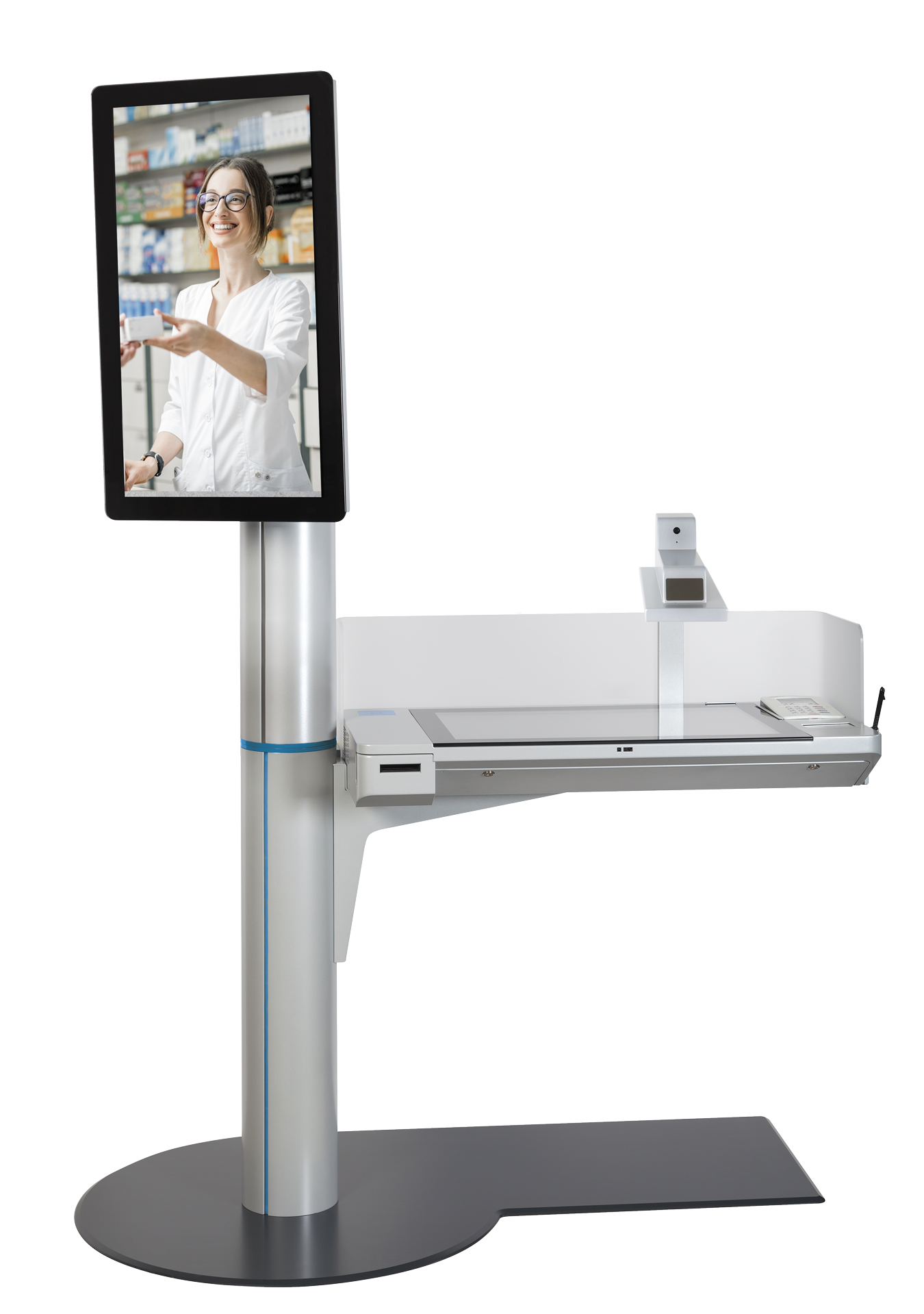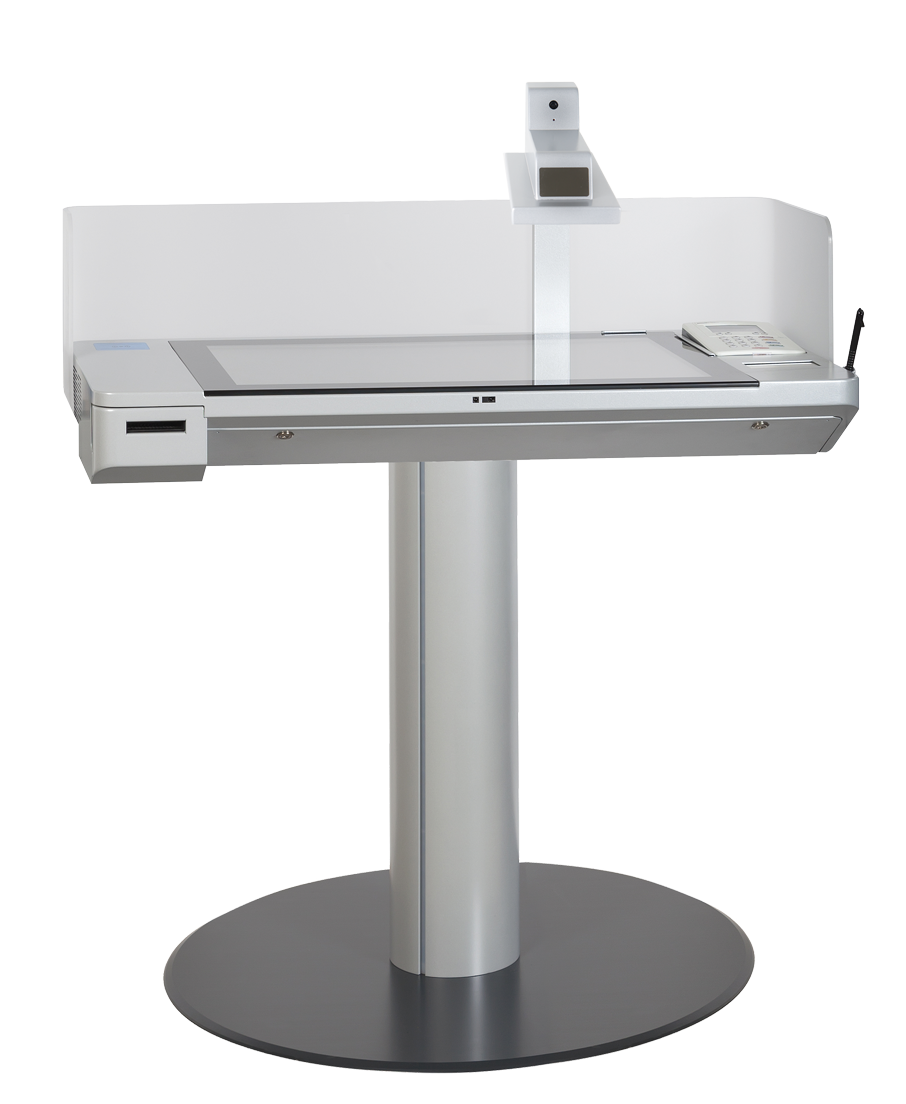To help control sensitive healthcare information, DeGIV created a privacy-platform with a specialized access-point, called "The Health Terminal." The solution is a publicly accessible hardware/software terminal that completely circumvents the Internet and its data privacy challenges while enabling patients to share their information — for example, healthcare data — in a highly secure, legally compliant manner.
From numerous public locations across Germany such as pharmacies, banks, public buildings and senior centers, citizens can provide health data, legally sign documents, submit contracts, get an identity verification or just talk to a doctor and even make payments — securely. The list of use cases is almost endless: even a retail establishment can enable secure sharing of data for people who aren’t digital yet.
Controlling Your Own Medical Data
 As a result of ironclad GDPR privacy policies across Europe, in today’s healthcare world patients control their own medical data — which they share with clinicians of their choosing. In 2014, DeGIV was founded to facilitate this process with greater security and usability — always with an eye on the digital gaps in administration.
As a result of ironclad GDPR privacy policies across Europe, in today’s healthcare world patients control their own medical data — which they share with clinicians of their choosing. In 2014, DeGIV was founded to facilitate this process with greater security and usability — always with an eye on the digital gaps in administration.
In this transformed legal and cultural landscape for healthcare information, the obvious avenues for data transfers aren’t necessarily the best choices, for several reasons. According to DeGIV consultant Dr. Hank Schiffers, security, usability, and accessibility can all present barriers.
"For most of us, the smartphone seems like a good option for managing health data," he said. "But we have to remember, this is some of our most sensitive data. And we’ve all seen countless instances where the smartphone platform and its applications are vulnerable to security breaches. No one wants their private health records stolen by hackers or sold to companies." Getting a job, an apartment or a loan agreement can be impossible if a person’s personal information such as a chronic disease is spread on the Internet.
In addition, with a median age of 47.8 years, Germany’s population is the world’s fourth-oldest. "A large segment of our people — particularly the older segments who are more likely to have healthcare needs — are not digital natives," said Schiffers. "About 10 to 15 percent of our population simply doesn’t trust smartphones, doesn’t own smartphones, and doesn’t want to use smartphones to manage their health data. So we decided to create a safer and easier way."
Even for younger people it is not easy to keep devices up to date. And for many, it’s much more comfortable to use the terminal instead of creating passwords or loading apps.
A Secure Machine-to-Machine Environment for Health Data
 With a passion for data privacy in today's highly connected world, DeGIV founder and CEO Dieter Rittinger devised The Health Terminal with an aim to provide that broad, no-barrier access to controlled healthcare data.
With a passion for data privacy in today's highly connected world, DeGIV founder and CEO Dieter Rittinger devised The Health Terminal with an aim to provide that broad, no-barrier access to controlled healthcare data.
This custom-designed, integrated appliance combines hardware, software, and secure networking to create a safe machine-to-machine environment. The key: The Health Terminal bypasses the Internet, creating its own private network connection to providers and payers, which safeguards the data from unauthorized access.
The Health Terminal comprises a custom-integrated wireless tablet, high-resolution camera, card reader, document scanner, legally acceptable signature pad, printer, and proximity sensor — all tightly integrated into a mountable cabinet or kiosk. A complete solution that includes a Digi IX20 cellular router with built-in Digi TrustFence® security provides wireless connectivity through non-Internet channels for secure data transfer, eliminating any local storage of sensitive data.
According to Schiffers and Rittinger, extensive testing was performed to design and refine the user interface. The device itself was specifically created for a healthcare environment and is completely shielded and ruggedized for public access. Additionally, the terminal was designed to support accessibility by those with vision impairments or physical challenges.
"Essentially, the Health Terminal operates on a machine-to-machine private network," Rittinger explained. "There’s no possibility of hacking because there’s actually no Internet connection and no access ports. A patient can securely access and provide sensitive healthcare data without using a smartphone or the Internet in a way that completely meets EU legal requirements. For health insurers in Germany, that’s a very appealing way to meet their legal obligations."
Greater Privacy for Healthcare Data
 Today, DeGIV has deployed more than 300 Health Terminals — primarily funded by insurance carriers — in locations across Germany such as pharmacies, senior centers, and government offices. Patients can self-enroll and complete telehealth visits and private videoconferencing, supply personal data, receive test results, redeem prescriptions, or even register for health studies or volunteer for drug trials.
Today, DeGIV has deployed more than 300 Health Terminals — primarily funded by insurance carriers — in locations across Germany such as pharmacies, senior centers, and government offices. Patients can self-enroll and complete telehealth visits and private videoconferencing, supply personal data, receive test results, redeem prescriptions, or even register for health studies or volunteer for drug trials.
"The key is that all of this is private, away from the eyes and algorithms of Facebook, Google, and other Big Tech firms that would seek to monetize health data. In Europe, the patient owns that data and now, with the Health Terminal, patients in Germany have an effective way to transmit that information without exposing it to third parties. By incorporating the secure Digi IX20 into the design, we can send images and healthcare data reliably and securely to provide greater privacy for patients."